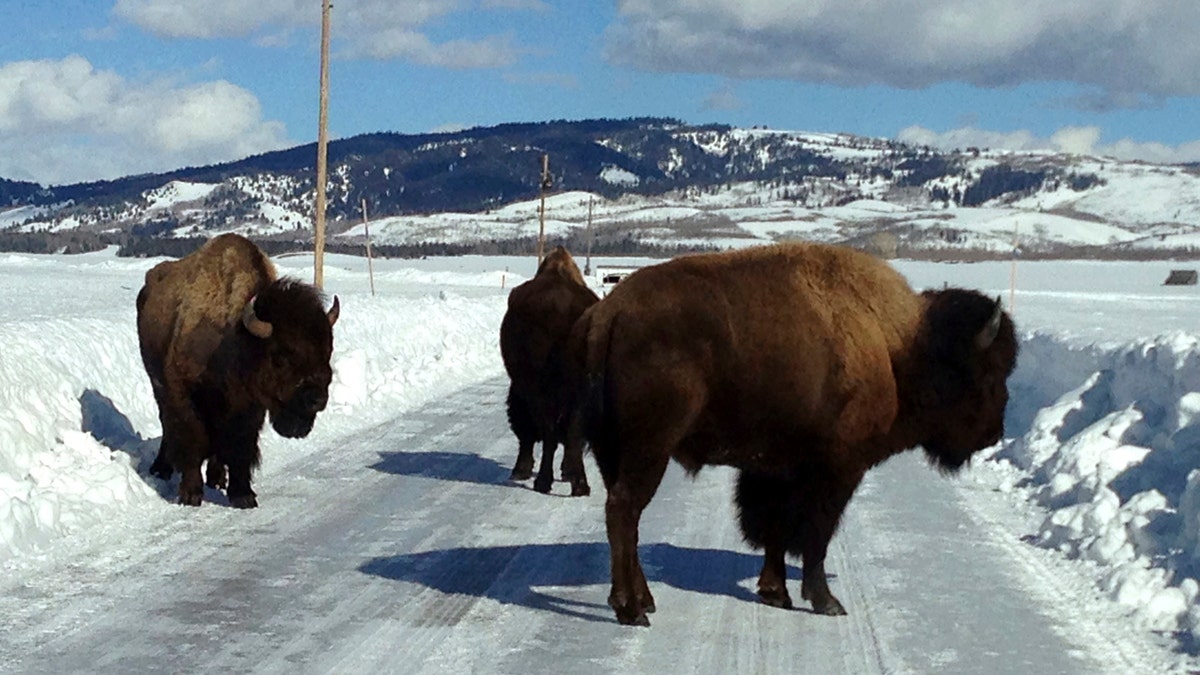
Wild bison climb a ridge at the Rocky Mountain Arsenal National Wildlife Refuge August 6, 2009. (REUTERS/U.S. Forest Service)
The time frame for when bison – the most successful mammal in colonizing North America after humans – came to the continent from Asia has long been a matter of debate.
But a group of Canadian scientists, using genetic and geologic information, recently were able to pinpoint a time frame of when these beasts came across the Bering Land Bridge.
According to a new study published in the Proceedings of the National Academy of Sciences, Bison came to North America between 135,000 and 195,000 years ago – a lot sooner than the 640,000 years ago stipulated in previous estimations.
Bison also apparently fared quite well in their new home, quickly multiplying their number, diversifying and becoming the dominant grazers on the plains of North America. They displaced mammoths, Pleistocene horses and other mammals that arrived on the continent earlier.
"They became very successful very quickly," Duane Froese of the University of Alberta, lead author of the study, told the Alaska Dispatch News. "Outside of humans, it's pretty much the most successful mammal invasion into North America."
The findings rely heavily on DNA extracted from the world’s oldest known bison fossil, which was discovered almost a decade ago near the Gwich'in indigenous village of Old Crow in Canada's Yukon Territory.
The fossil was discovered under a layer of ash from an enormous eruption that happened about 130,000 years ago in southwestern Alaska. The ash basically acted as a time marker in the earth that allowed scientists to figure out the age of the Yukon bison fossil and confirm it as the oldest known bison fossil in North America.

In this Feb. 4, 2017 photo provided by Grand Teton National Park, three bison linger on a plowed area of Antelope Flats Road, in Grand Teton National Park, Wyo. (Grand Teton National Park via AP)
Because radiocarbon dating doesn’t work past the ages of about 40,000 to 50,000 years, the DNA analysis was necessary. Using new technology, researchers compared the DNA from the Yukon fossil with that of a younger fossil found near Snowmass, Colorado. Both fossils then were compared with dozens of younger bison fossils.
From their research, scientists were able to determine that all bison shared a common ancestor 135,000 to 195,000 years ago – during a period when the Bering Land Bridge was exposed. Scientists were also able to determine that bison migrated over the land bridge in a second wave 21,000 to 45,000 years ago.
"It's been kind of a long puzzle in the world of paleontology and paleobiology," Froese said.




















